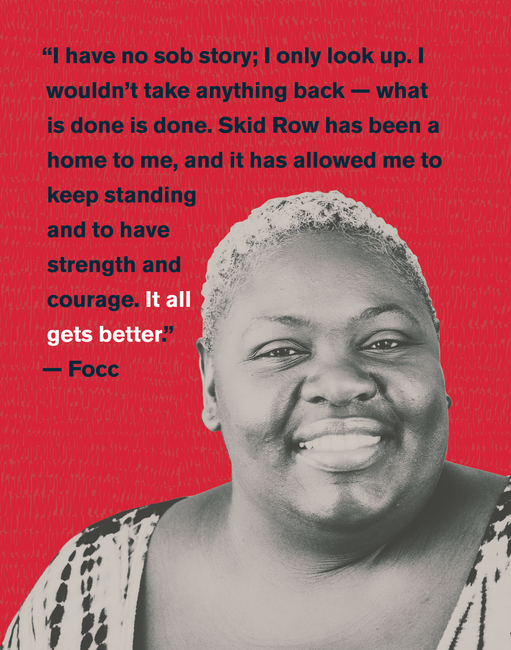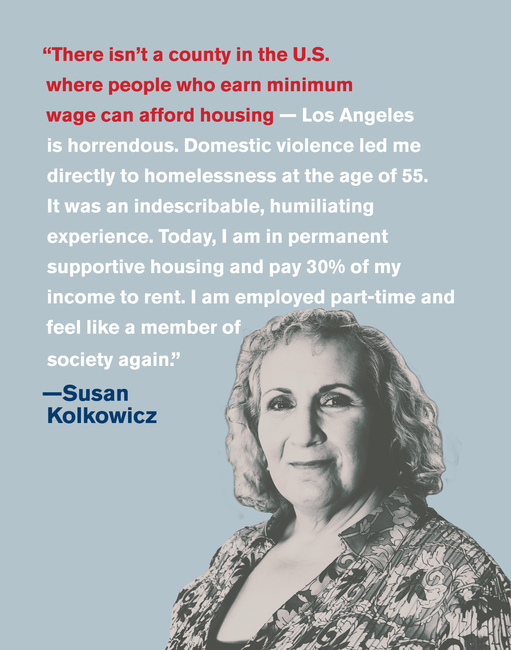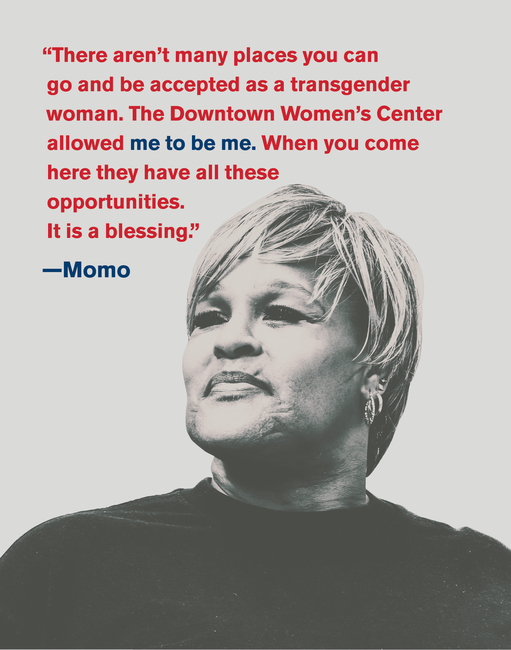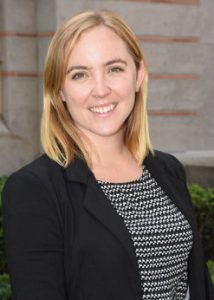Women Experiencing Homelessness in Los Angeles
Every January, the Los Angeles County Homeless Services Authority (LAHSA) conducts a count of the number of people experiencing homelessness in LA County. From 2018 to 2019, the number of people experiencing homelessness in the City of LA rose by 16% to 36,165. In 2019, 30% of the City’s entire homeless population were women. Women experiencing homelessness face a unique set of challenges that require extra consideration including mental and physical health as well as safety
Demographics
In 2018, the USC Price Center for Social Innovation partnered with the Downtown Women’s Center to write a report on the state of women’s homelessness in the city of Los Angeles. The report examined the characteristics of women experiencing homelessness including race, age, familial makeup, and location.
When compared with the general population of adult women, defined as women over age 25, women experiencing homelessness were found to be disproportionately Black and between the ages of 51-60.
Hover over the graph below to see the ethnic distribution of women experiencing homelessness compared to that of the general population of women.
According to our analyses, in 2019, 83% of all women experiencing homelessness in the City of Los Angeles reported that they were living alone as opposed to in a family unit. Thirty-four percent of that population were chronically homeless. Chronic homelessness describes people who have experienced homelessness for at least a year — or more than four times in the past three years — while struggling with a disabling condition such as a serious mental illness, substance use disorder, or physical disability. These metrics are important to measure because homeless women living alone for an extended period of time may be more likely to feel unsafe than men in a similar situation, given the prevalence of sexual assault faced by homeless women. A nationally representative survey in 2007 found that 16% of single females reported experiencing sexual assault while homeless as compared with just 4% of men.
Location
The location of those living without permanent housing is also an important metric because it helps service providers determine where their services are most needed. Alternatively, people experiencing homelessness may be drawn to neighborhoods where service providers have created strong networks and relationships.
In 2019, 75% of all women experiencing homelessness were unsheltered and the highest concentration was living Downtown. This is particularly concerning when considering that those who are unsheltered are more effected by environmental contaminants such as air quality, which is a major problem in Downtown. In 2017 the pollution burden was 8.32, well above the LA County average of 6.2. Air quality, as measured by the average annual concentration of fine particulate matter in the air, was 12.89 micrograms per cubic meter of air whereas the LA County average was 11.5 micrograms per cubic meter.
Hover over the map below to see where the highest concentration of women experiencing homelessness is by City Council District.

Furthermore, high rents in Downtown make housing people in that neighborhood particularly difficult. Rent burden, defined as the percentage of renters spending more than 30% of their monthly income on rent and utilities, was 51% in Downtown in 2017. Severe rent burden, the percentage of renters spending 50% or more of their monthly income on rent and utilities, was 24%.
Unique Challenges Facing Women

In 2019, nearly 56% of adult women experiencing homelessness in the City of Los Angeles reported also having experienced domestic violence, with 8% of unsheltered adult women reporting that fleeing domestic abuse was the reason for their housing instability. According to the World Health Organization, domestic violence has much further-reaching impacts than any physical injuries it may cause. Women who experience intimate partner violence suffer higher levels of depression and anxiety than those who do not, resulting in an increased need for mental health treatment. This treatment is difficult to access for women experiencing homelessness.
Similarly, access to other types of healthcare is a serious problem for this population. Seventy-three percent of homeless individuals reported having at least one unmet medical need. Women have an additional set of healthcare concerns as a result of pregnancy and menstrual cycles. The average woman will spend up to $300 annually on feminine hygiene products, an amount well out of reach for women experiencing homelessness. Additionally they often lack proper pregnancy care and are 2.9 times more likely to give birth prematurely, leading to smaller and less healthy babies.
Lastly, in 2019, 44% of unsheltered adult women experiencing homelessness reported social circumstances, such as a relationship ending or household conflict, as the key reason for their lack of housing, while 40% reported economic hardship. Studies have shown that individual female households are more likely to be rent burdened than individual male households, and women of color experience the highest rates of rent burden. This, along with structural and institutional racism, may help explain the disproportionately large number of Black women experiencing homelessness, given the link between housing unaffordability and homelessness.
Downtown Women's Health Center
One organization working at the heart of the homelessness crisis is the Downtown Women’s Center (DWC). Using the Housing First model, DWC provides 119 units of permanent supportive housing for single unaccompanied women across two residences in downtown Los Angeles. Each resident has access to individualized support and services including health care, education, job readiness, and community-building activities. Their Day Center, located at one of the residences, is an entry point for women-centered services including three meals daily, clean bathrooms and clothes, an address to receive mail, a safe place to rest, and one-on-one case management. Day Center case managers can also link women to healthcare, legal aid, transportation, job training and educational services, as well as work placements and other resources. An onsite health clinic provides primary care, STD and HIV testing, tuberculosis and cancer screenings, vaccinations, mammograms, and physicals as well as mental health assessments. DWC also provides services for women who have experienced domestic violence or other hardships through their Trauma Recovery Center. Finally, they operate several businesses through their social enterprise MADE by DWC, including a café, a resale boutique, and a home and gift collection, where women enrolled in their job training programs learn the skills needed to create a line of hand-crafted products.

Policy Solutions
While DWC provides much-needed services for their community, in order to address the root cause of the growing homelessness crisis we need large scale investments in affordable housing and other housing solutions. There are two types of housing strategies popular among researchers and those who advocate for solutions to homelessness. The first, transitional housing, is a temporary housing program intended to help people ready themselves to move to permanent housing. Transitional housing programs are intended to serve people for no more than 2 years and usually have specific supportive services as a part of the program.
While transitional housing programs may provide temporary support, Permanent Supportive Housing (PSH) is the preferred strategy for people who may continue to need supportive services after they find permanent housing. PSH provides low-cost affordable housing without term limits. Importantly, PSH employs a “housing first” model, which provides housing to individuals experiencing homelessness without preconditions such as sobriety or participation in treatment services. The most successful PSH programs also provide health care and other support services. One such program in Los Angeles, Housing for Health, found that participants had improved self-reported mental health, fewer emergency health needs, and fewer arrests after participating. Providing further funding to similar PSH programs could help improve the lives of women, and any person, experiencing homelessness.
Women experiencing homelessness face a unique set of issues including domestic abuse and safety, healthcare, and low wages. While policy solutions such as large-scale transitional housing and PSH are important goals to strive towards, those policies may take several years to implement. Organizations such as DWC are providing critical support for women experiencing homelessness today.

Grace Persico
Grace Persico is a Master of Public Policy student interested in education policy, social justice, and community development. She studied international relations and anthropology at UC Davis, graduating with a dual degree in 2013. Prior to beginning her master’s program, Grace worked at Oakland Unified School District organizing summer and after school programs and spent some time abroad teaching in Colombia. In her free time she enjoys traveling, reading, and re-watching every episode of Parks & Rec
Photo Credits: Barry Shaffer
Sources
Baker, R., Gelberg, L., Heslin, K., Robinson, L. (2007). Community Characteristics and Violence Against Homeless Women in Los Angeles County. Journal of Healthcare for the Poor and Underserved. Accessed 2/4/2020 from: https://muse.jhu.edu/article/210743
Benitez, J., Fels, K., Glenn, C., Goodman, L. (2006). No Safe Place: Sexual Assault in the Lives of Homeless Women. National Online Resource Center for Violence Against Women. Accessed 1/30/2020 from: https://vawnet.org/material/no-safe-place-sexual-assault-lives-homeless-women
Briscombe, B., Cefalu, M., Harvey, M., Hunter, S. (2017). Evaluation of Housing for Health Permanent Supportive Housing Program. Rand Corporation. Accessed 1/30/2020 from: https://www.rand.org/pubs/research_reports/RR1694.html
Committee on Health Care for Underserved Women (2013). Health Care for Homeless Women. The American College of Obstetricians and Gynecologists. Accessed 2/1/2020 from: https://www.acog.org/Clinical-Guidance-and-Publications/Committee-Opinions/Committee-on-Health-Care-for-Underserved-Women/Health-Care-for-Homeless-Women?IsMobileSet=false
Los Angeles Homelessness Services Authority (2019). Female Data Summary. Accessed 1/28/2020 from: https://www.lahsa.org/documents?id=4019-hc2019-females-data-summary
Los Angeles Homelessness Services Authority (2019). City of Los Angeles Data Summary. Accessed 1/28/2020 from: https://www.lahsa.org/documents?id=3421-2019-greater-los-angeles-homeless-count-city-of-los-angeles.pdf
National Equity Atlas (2017). When Renters Rise, Cities Thrive. Accessed 2/4/2020 from: https://nationalequityatlas.org/sites/default/files/National-Fact-Sheet.pdf
USC Price Center for Social Innovation (2019). City of Los Angeles Women’s Housing Gap Analysis. Accessed 1/28/2020 from: https://www.downtownwomenscenter.org/wp-content/uploads/2019/12/Womens-Housing-Gaps-Analysis_Final.pdf
World Health Organization. (2012). Understanding and Addressing Violence Against Women. Accessed 1/26/2020 from: https://apps.who.int/iris/bitstream/handle/10665/77432/WHO_RHR_12.36_eng.pdf;jsessionid=2AC48B50292CB66E99EF6C6FFE6090ED?sequence=1
Photo Attributions
Cover Photo: Photo courtesy of Istock/peeterv
Photo 1-3: Photos courtesy of Downtowns Women’s Center

